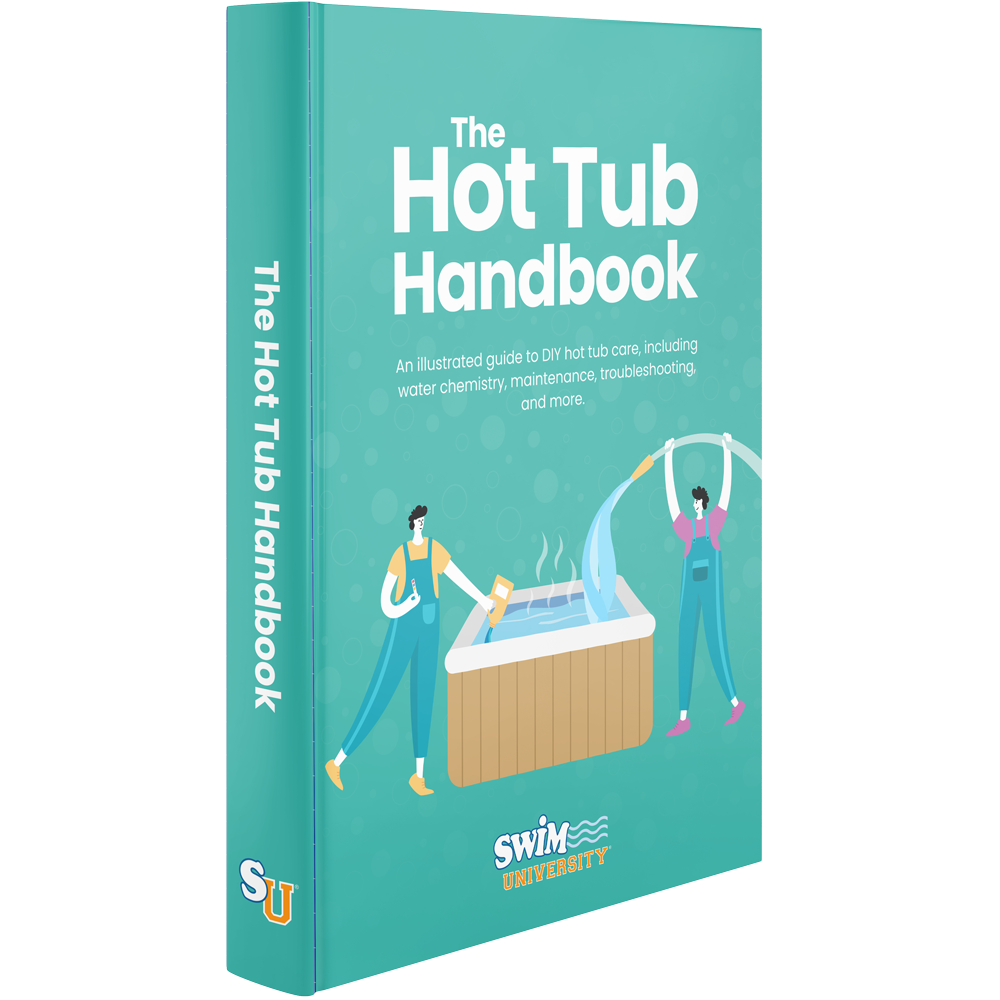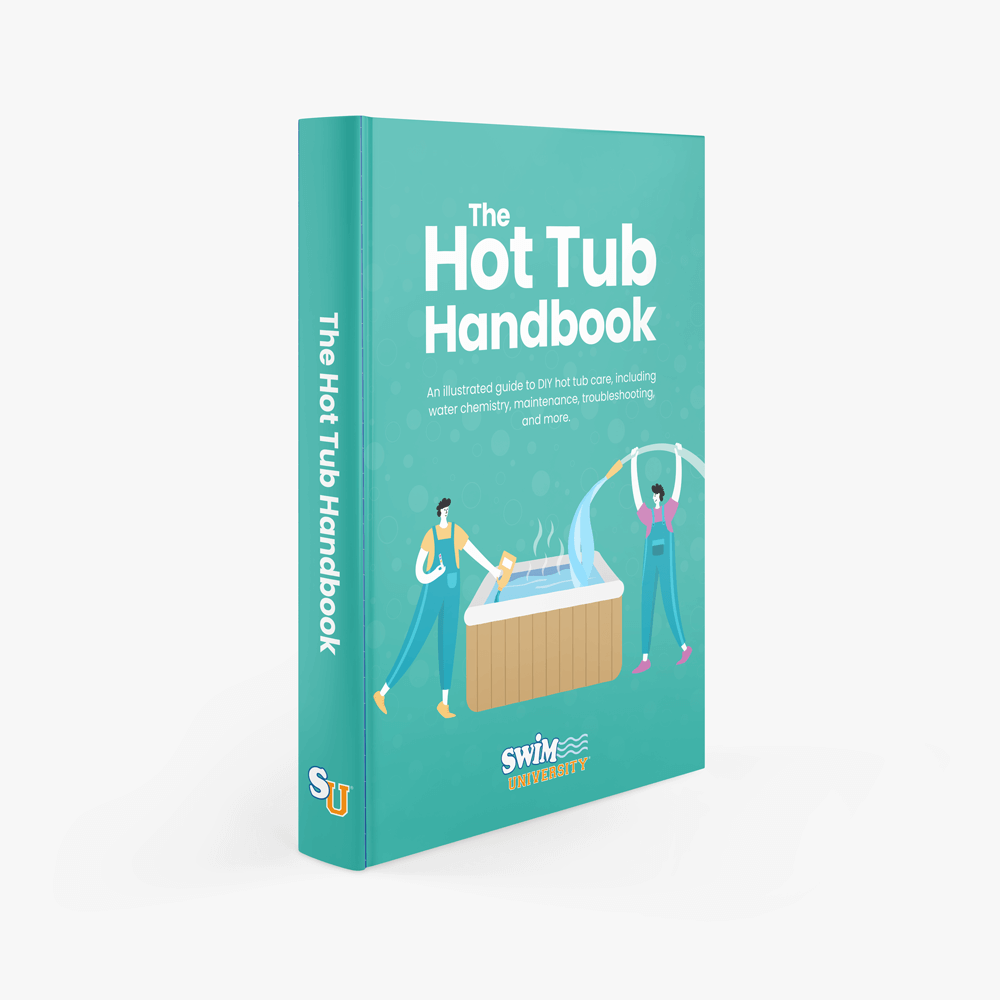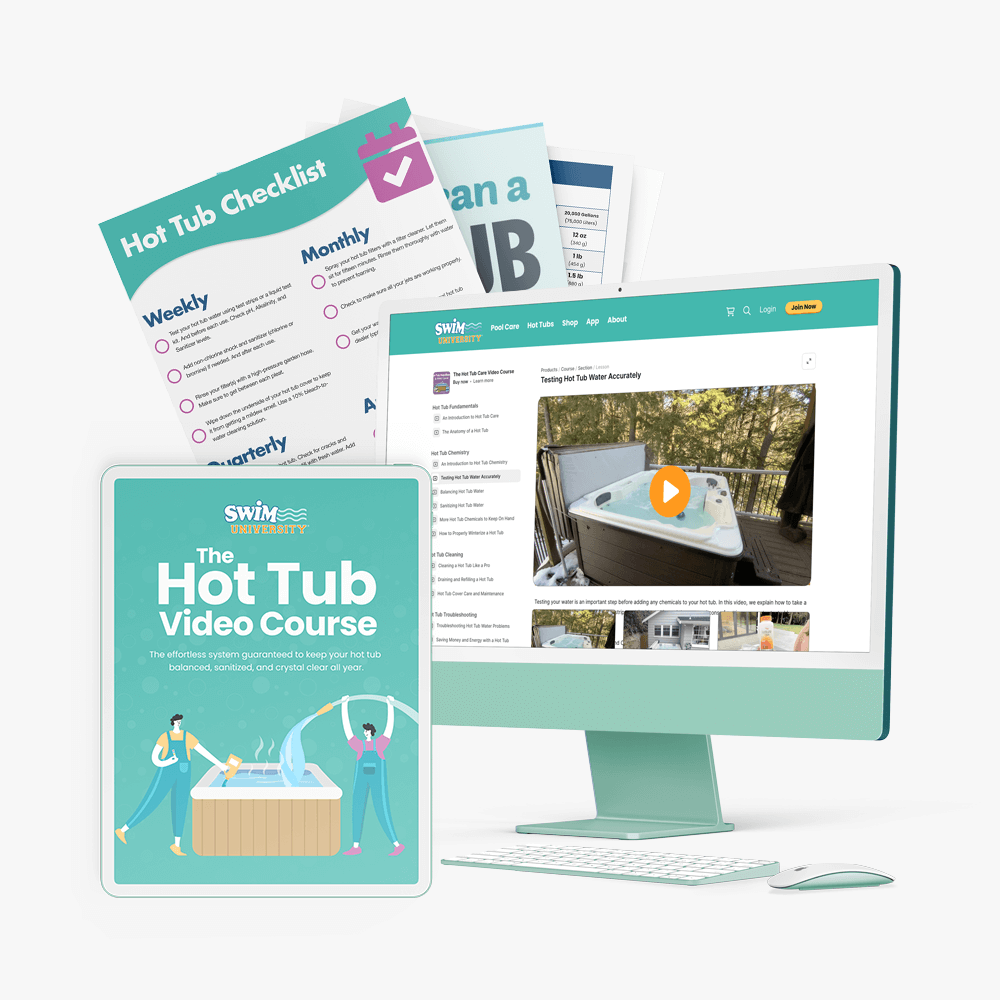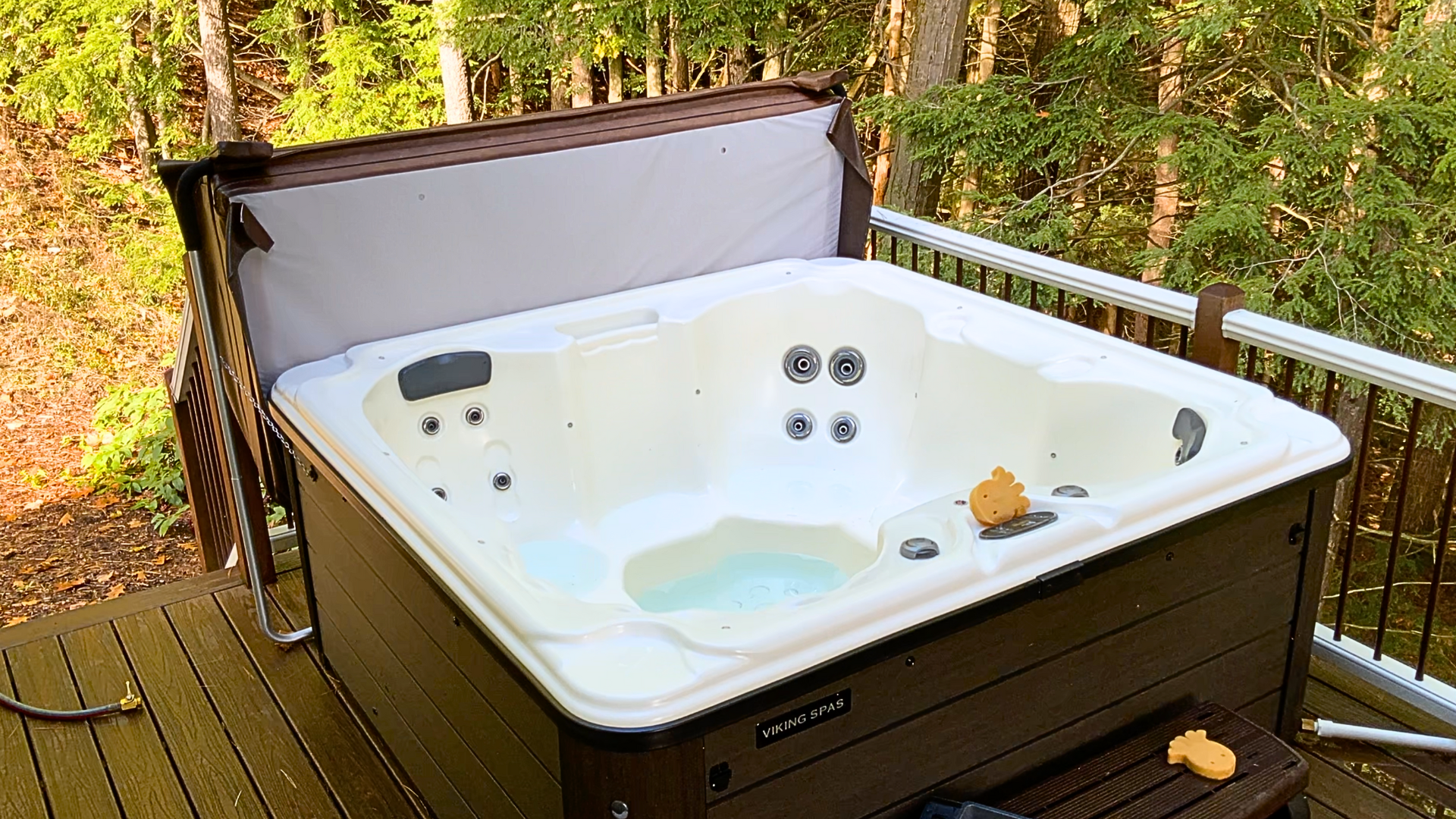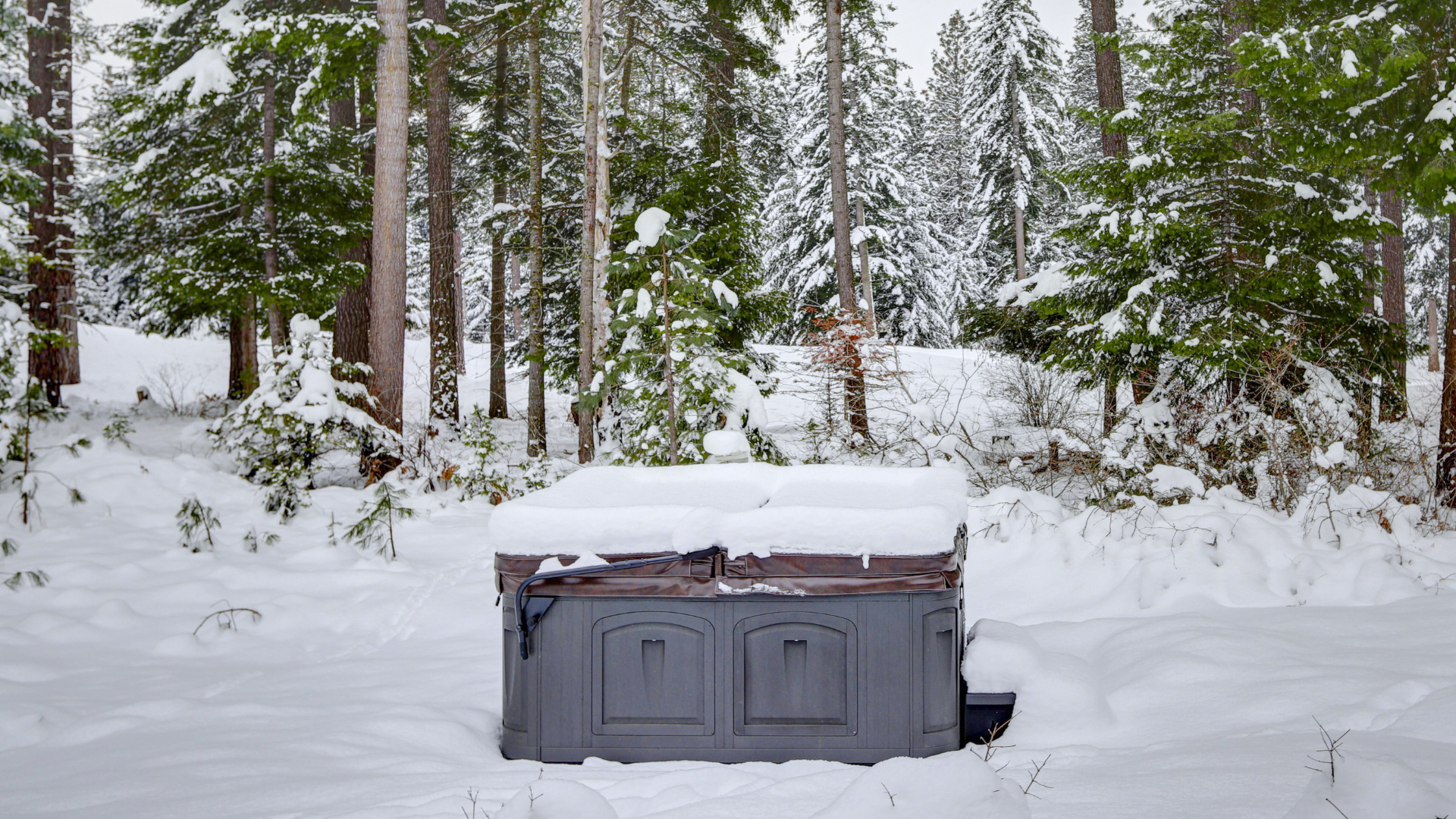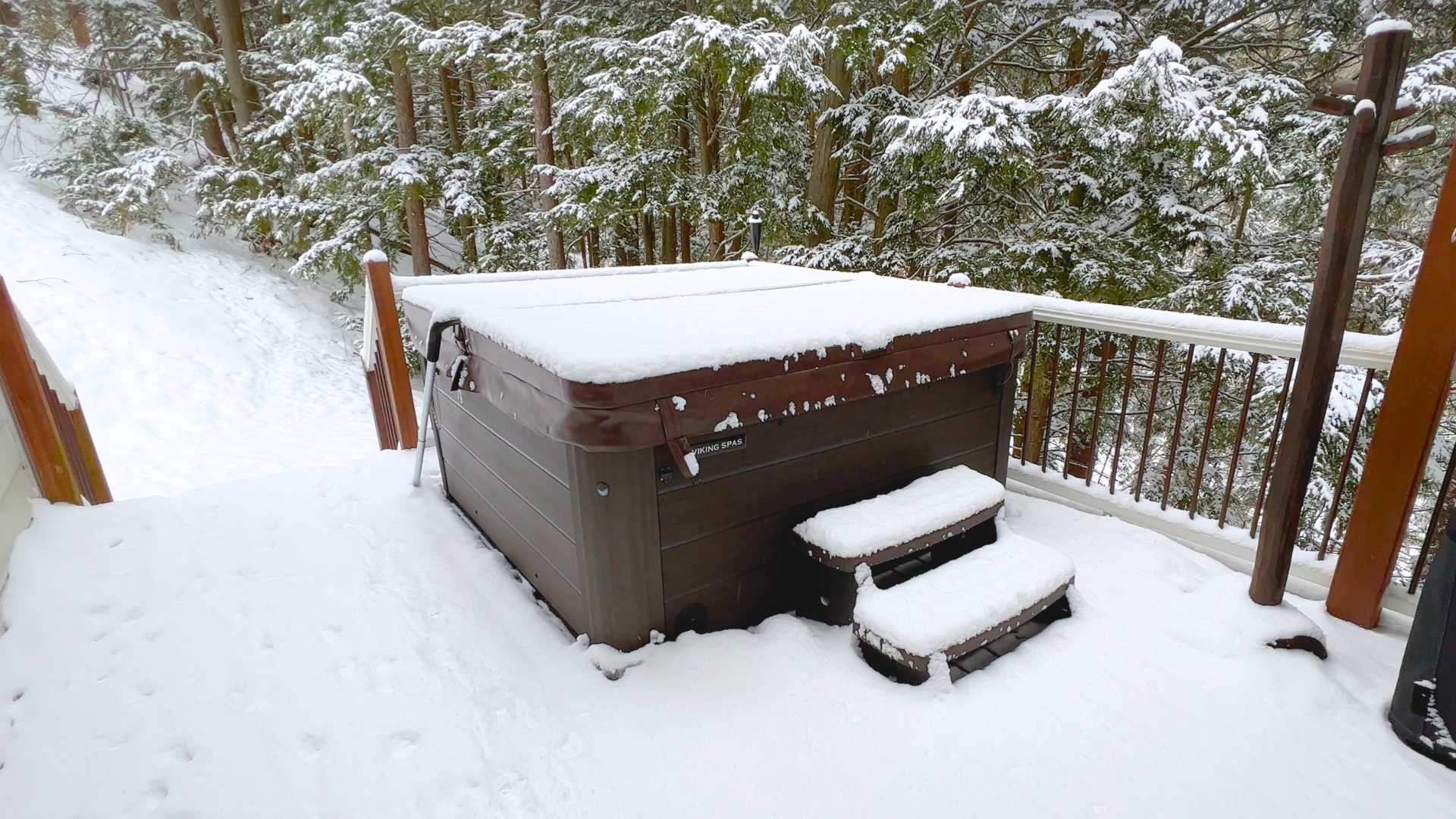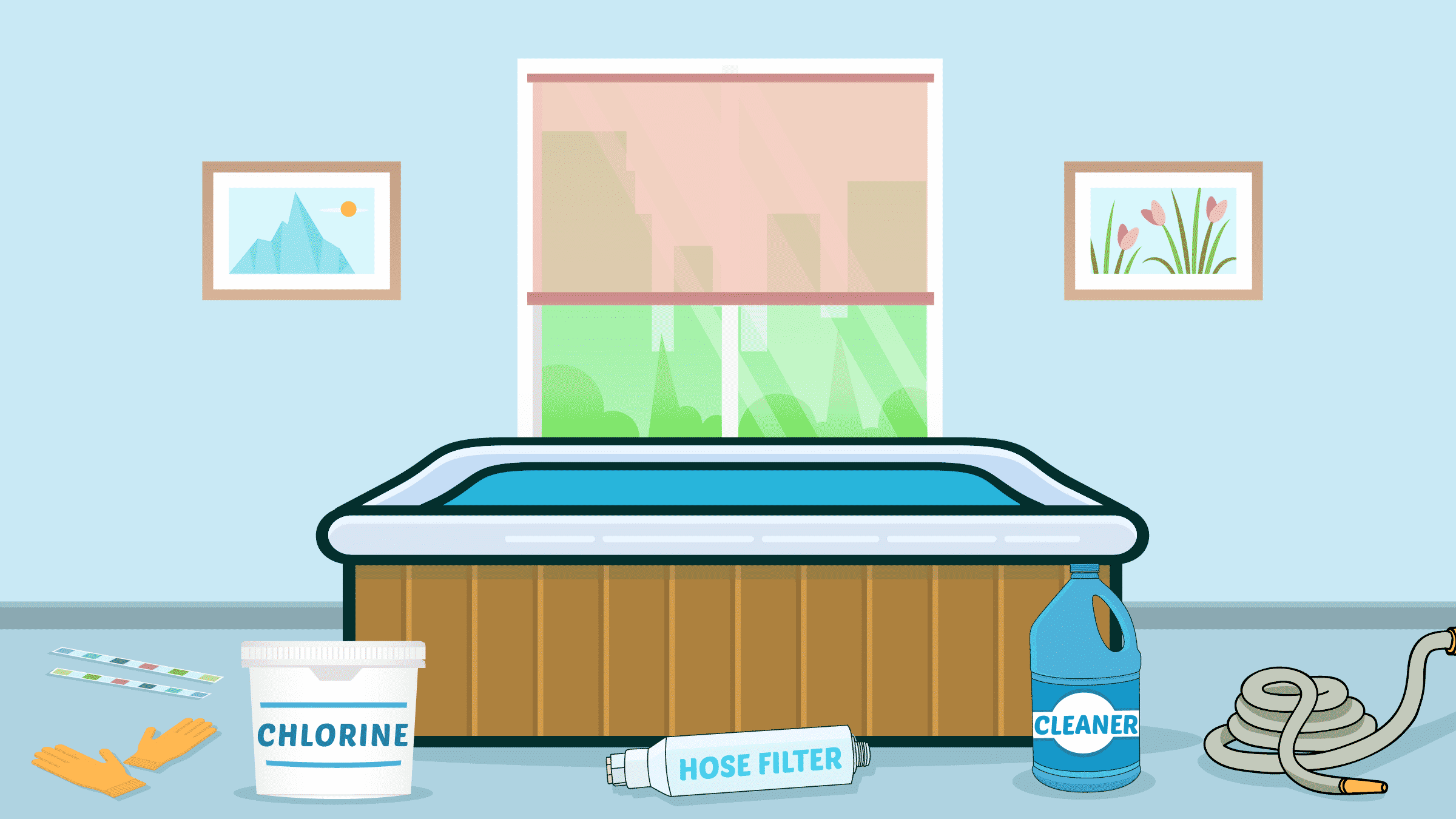Hot Tub Winter Maintenance: 3 Keys to Protecting Your Hot Tub in the Cold
Your hot tub needs three things in the winter: proper circulation, enough heat, and the right protection from freezing temperatures. Without these three critical components, your hot tub is at risk of freeze damage, cracked plumbing, and a broken pump or heater. This type of damage usually isn’t covered by your spa’s warranty.
Here are eight key steps to take care of your hot tub during winter. Keep reading for a complete guide, or check out the hot tub handbook for a physical copy of all of these tips.
Learn how to keep your hot tub clear while saving money so you can enjoy more soaking time without big costs. The Hot Tub Handbook covers every type of hot tub on earth.
1. Use Your Freeze Protection Setting
Moving water is less likely to freeze, so keeping the water circulating when the temperature drops is crucial to preventing freeze damage. Most modern hot tubs include a built-in freeze protection feature (called no-freeze or freeze protection mode). This setting uses a temperature sensor to monitor outside air and automatically activates the circulation pump when temperatures approach freezing. Even with a freeze protection setting, check your water temperature regularly to make sure it’s working correctly.
If you don’t have freeze protection, run your pump on low speed continuously during freezing weather. You can also set it to cycle on for 15 to 20 minutes every hour. This keeps warm water moving through the pipes and prevents freeze damage.
What Mode Should I Run My Hot Tub in the Winter?
Keep your hot tub in “Standard” or “Ready Mode” with Freeze Protection or No-Freeze Mode enabled. The freeze protection feature automatically circulates water when temperatures reach freezing. Never use economy mode or turn off your system completely during freezing weather. The water temperature can drop too low, and you risk frozen pipes and equipment.
2. Keep a Steady Water Temperature of 80°F (27°C)
Setting your hot tub to a constant warm temperature not only prevents freeze damage, but it also saves energy. If you use your hot tub more than once a week, keep the water temperature set to at least 80°F (27°C). This method uses less energy than reheating from cold and prevents the water temperature from dipping too low in freezing weather.
Most hot tubs take one hour to heat water by 3 to 6°F (1.5 to 3°C), but this takes even longer when it’s cold outside.
Never completely turn off your heater in the winter, as standing water in pipes can freeze and expand, potentially causing damage to your plumbing and equipment.
3. Don’t Leave Your Hot Tub Unused for More Than Four Weeks
Your hot tub can sit unused for up to four weeks in winter if the water is heated and circulating. Keep the water heated to at least 80°F (27°C) and your freeze protection active. Your sanitizer will continue working, and your other chemical levels should remain relatively stable.
However, beyond four weeks without maintenance, your water chemistry will deteriorate. Bacteria and algae can start to grow if your levels aren’t tested and balanced after a month. If you plan to be away longer than a month, drain and winterize your hot tub (check out our winterizing guide for a step-by-step walkthrough).
4. Secure Your Cover
A well-fitting cover is your first defense against heat loss in winter. Make sure your cover fits snugly on the spa, with no gaps where warm air can escape. The cover’s skirt should hang around the sides to create a seal. Check that all straps and locks are securely fastened to prevent wind from lifting the cover.
Protect your hot tub cover over the winter by securing it with wind staps and locks.
5. Remove Snow and Ice Regularly From Your Cover
Snow and ice accumulation can add significant weight to your hot tub cover, potentially damaging the foam core and causing the cover to sag or crack. Plan to remove snow with a soft-bristled brush or broom regularly. Never use sharp tools or metal shovels to clear your cover. These can tear the vinyl or puncture the surface.
If you get significant snow or ice buildup on your spa, consider adding a tarp over your hot tub cover to make removing the accumulation easier. Use a heavy-duty tarp that’s weighted or secured properly so it doesn’t blow away in the wind.
6. Add a Thermal Spa Blanket
Adding an extra insulation layer helps trap heat and reduce the energy needed to maintain your water temperature. A thermal spa blanket floats on top of your water under the cover, locking in heat and decreasing condensation. Less condensation means less mildew growth and prevents your cover from becoming waterlogged.
Remove the blanket when you use the spa and replace it afterward. This small investment not only reduces heating costs but also helps extend the life of your cover by protecting it from condensation and chemical damage.
A great cover to help keep the water warm. Using it regularly also helps maintain your water chemistry levels. Our solar blanket covers are made from a lightweight, yet durable polyethylene material. They are easy to install by cutting the cover to the shape of your spa or hot tub with scissors if it is irregularly shaped.
7. Top Off Your Water Once or Twice a Month (as Needed)
It’s surprising how much water loss happens during the cold months, and your water level is crucial to monitor during winter when your spa’s system is constantly running. If your water level drops below the skimmer intake, your pump and heater may shut off automatically. This can result in frozen pipes during freezing weather.
Check your water level at least once a week during winter and plan to top off your water once or twice a month as needed.
If your hose or outdoor spigot is winterized or frozen, you can fill your hot tub from inside the house using buckets or a flexible garden hose with a faucet adapter to connect to an indoor faucet. Check out our guide on How to Fill a Hot Tub in Winter for more help.
8. Plan a Deep Cleaning Before Freezing Weather
Schedule your deep cleaning in the fall and spring when you can safely and easily drain, clean, and refill your spa. This involves purging your plumbing with a
If you drain during freezing weather, you run the risk of water freezing in your pipes before you refill and reheat your spa. Time your cleaning when temperatures are still above 40°F (4°C). If you need to clean during freezing weather, plan on a partial drain and skip the plumbing purge.
Keeping Your Hot Tub Empty and Drained in Winter?
You still need to protect your plumbing and equipment from freeze damage. Any residual water left in the pipes, jet fittings, pumps, or heater can expand and crack. Check out our guide to winterizing your hot tub: https://www.swimuniversity.com/winterize-hot-tub/
Key Takeaways
- Use your freeze protection or run your pump continuously during freezing weather to keep water circulating through pipes and prevent ice damage.
- Maintain a water temperature of at least 80°F (27°C) if you use your hot tub more than once a week.
- Your hot tub can sit unused for up to four weeks if the water is properly heated and circulating with active freeze protection. Beyond a month, plan to drain and winterize.
- Secure your cover properly and remove snow accumulation with a soft brush. Consider adding a tarp for easier snow removal.
- Use a floating thermal blanket under your cover to retain heat and reduce condensation, which can cause mildew and waterlogging.
- Check your water level weekly and top it off once or twice a month as needed to keep it above the skimmer intake.
- Plan your deep clean in fall and spring when temperatures are above freezing.
3 Ways We Can Help With Your Hot Tub
- Hot Tub Cheat Sheets (Free): Easy-to-use guides to help you keep your hot tub water balanced and sanitized.
- The Hot Tub Handbook: An illustrated guide to DIY hot tub care, including water chemistry, maintenance, troubleshooting, and more.
- The Hot Tub Care Course. You’ll get step-by-step videos and a step-by-step downloadable guide with everything you need to know about hot tub maintenance.

